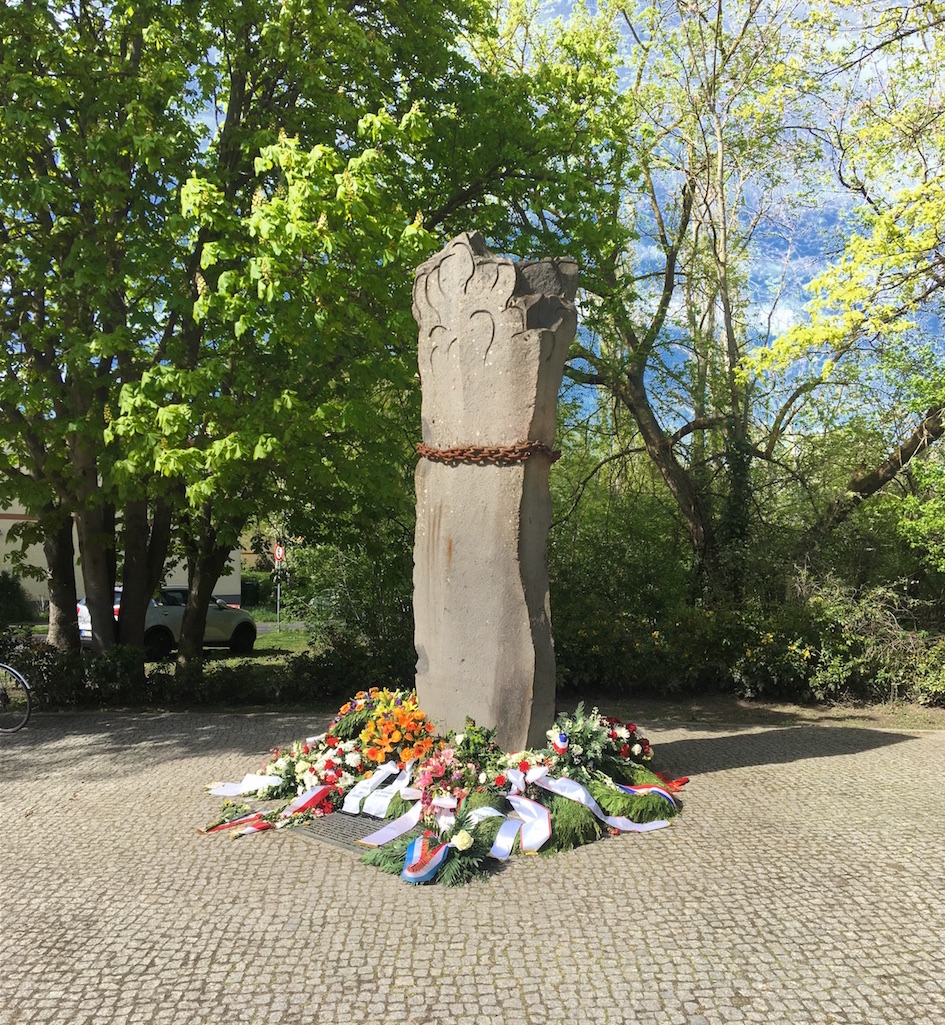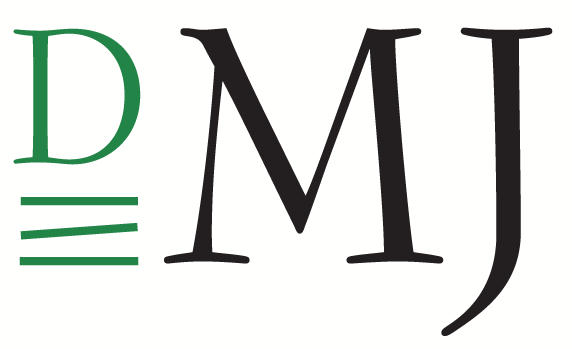The column
Since 2000, a stele made of basalt lava, wrapped in a heavy, rusty chain, has stood in Berlin-Lichterfelde at Wismarer Strasse 26-36 on the Teltow Canal. This Column of Prisoners by the Rhineland-Palatinate sculptor Günther Öllers (1925-2011) commemorates a branch of the Sachsenhausen concentration camp, which was located at this site from 1942 to 1945.
At the canal
Several times I have passed this unusual memorial on foot or by bicycle on the beautiful path along the canal, but never has it stood out from a sea of flowers as it does today.

Victory-Day
It is the day after Victory in Europe Day, the anniversary of the victory over war and fascist dictatorship in Germany. It is a Sunday and the first warm day after a much too cold spring. People are literally pushing to get outside, and there is also a sense of euphoria – perhaps not entirely harmless – about falling incidence figures and the vaccination campaign, which is progressing more quickly.


The child with a rose
A young Greek-speaking family approaches with bicycles and pedal scooters. The father hands out yellow roses he brought with him. The children lay them down at the stele, among the many floral arrangements and wreaths. A touching, intimate moment.

Remembrance
On the ribbons of the wreaths are the names of those who express their remembrance of the former camp here: The Initiative KZ-Außenlager Lichterfelde e.V., which again this year – despite the pandemic – had invited to the commemoration event on May 8; the Central Council of German Sinti and Roma, other interest groups, the country representatives of France, Ukraine, Norway, the Netherlands and Greece.
The concentration camp
1500 prisoners from these and other countries were housed in the barracks surrounded by electrically charged barbed wire. Every day they had to work up to 15 hours in SS facilities, ministries or private households of Nazi officials. On the way to and from their workplaces, they came into contact with the population and were sometimes able to procure additional food. Some managed to escape. At least 41 of the forced laborers lost their lives.

The initiative
A text and picture board provides information about the subcamp on site. Detailed information about the history and the work of the association as well as a video documentation of the event on May 8 can be found on its homepage (see below).
Cornelia Seibeld, vice president of the Berlin state parliament, addressed the core of what commemorative culture in Germany will be about in the future in her welcoming speech:
It is important to keep remembrance alive, especially because every year fewer eye witnesses can personally tell of the horror of those days.
What flowers do
Keeping the memory alive is something that can only be done from generation to generation in the long run. The Greek father, whose father or grandfather may have been a POW and an inmate of this camp himself, does it when he lays flowers here with his children.
Many today become aware of this place as they pass by.
Another family cycles by some distance from each other. “What is that?” the son shouts. The father yells back, “KAZETT!”.
Questioning children and answering parents: What better thing could the flowers on the Column of the Prisoners do?
Website of the
Initiative KZ-Außenlager Lichterfelde e.V.
More posts on the culture of remembrance on this website:
Holocaust remembrance (about the former concentration camp Sachsenhausen near Berlin)
